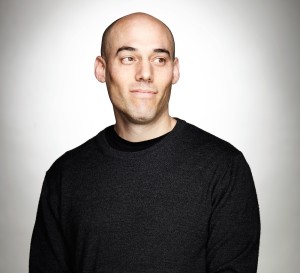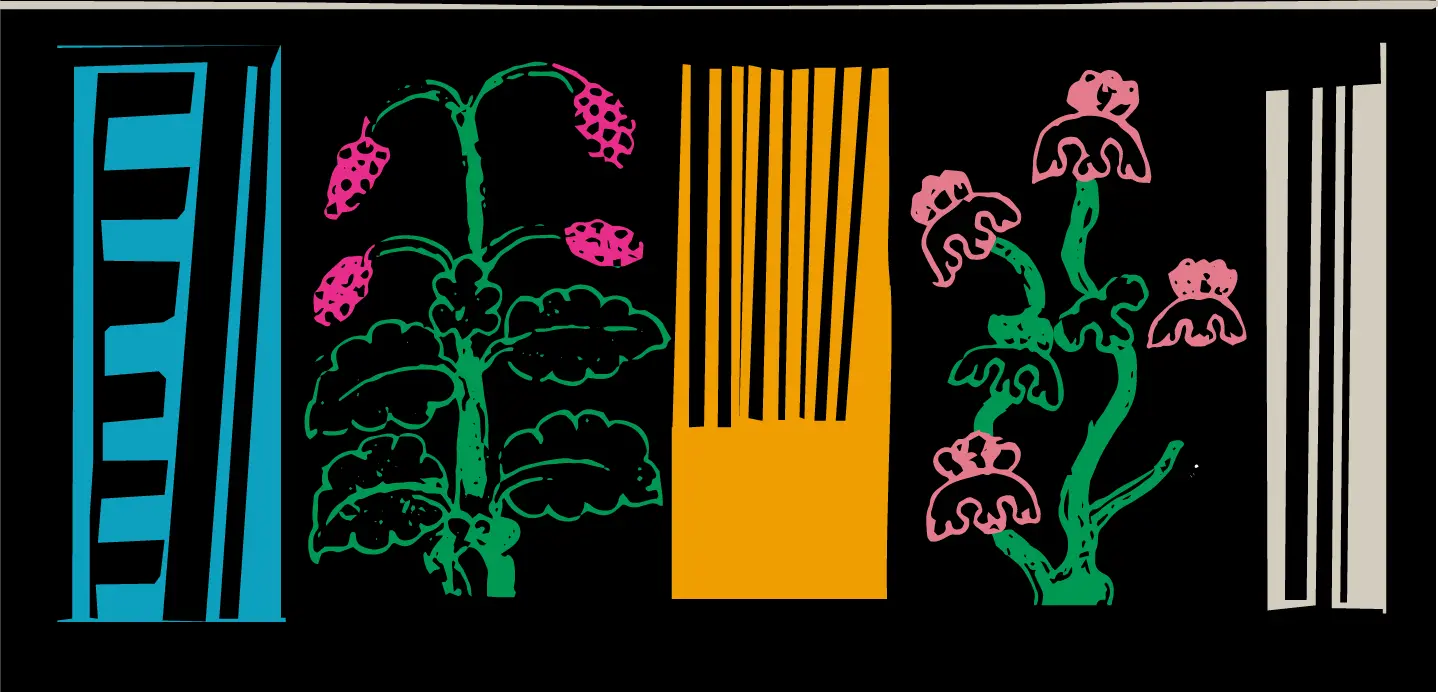Joshua Oppenheimer is based in Copenhagen, Denmark, and has worked for over a decade with militias, death squads and their victims to explore the relationship between political violence and the public imagination. His films include The Look of Silence (2014), The Act of Killing (2012), The Globalisation Tapes (2002), The Entire History of the Louisiana Purchase (1998), These Places We’ve Learned to Call Home (1996), and other shorts.
His films The Look of Silence and The Act of Killing will be screened at DIFF 2015.

Joshua Oppenheimer
Adi using his job as an optometrist to ask patients about their experiences of the genocide serves as a powerful metaphor in The Look of Silence. Did you know about this beforehand? How did it play into the making of the film?
Adi, as we see in one of the earlier scenes in the film, is an optometrist who goes door to door testing people’s eyes. It was only midway through the shooting of The Act of Killing that I discovered that Adi would deliberately seek out older patients so that he could ask them about their memories of the 1965 killings. He would do this in his daily job, outside the film. This image of a man testing people’s eyesight and encountering survivors who want to see, ordinary Indonesians who are afraid to see, and the perpetrators who are wilfully blind, was a striking one. When it was time to set up the confrontations in the film, of course the perpetrators knew me, because I had filmed them before. But I would have to say Adi was my friend, and that he had a personal connection to the genocide. This time, I would film him discussing the past with the perpetrators, and in exchange for their time Adi would test their eyes.
I knew instantly that the close up of Inong with Adi’s red eye testing glasses was the first shot of the film. For me this image is really what the film is about, about a man who can’t see, but who’s being encouraged to see. It’s as though he’s wilfully blind, without any curiosity. I think this shot somehow embodies, in one poetic image, the whole movie. Maybe as a result of the quest that he started or maybe as a result of my filmmaking process, Adi in his everyday life started to become increasingly curious about what happened. So he started to ask questions to the people whose eyes he was testing – that’s not something Adi was necessarily doing before he met me. So it’s not like that there’s a state of nature, independent of the film, which is pristine. My filmmaking process had affected Adi’s life for many years by that point. When you find a metaphor like that, then you as a filmmaker have to think what can you do with that metaphor. We were trying do something poetic with a metaphor that was very much grounded in who Adi is and what he is doing.
Can you bring us up-to-date with the situation of your main protagonist, Adi? Where is he now and what have the consequences of the film been for him?
Adi travelled with the film to the Venice, Telluride, and Toronto film festivals, before returning to Indonesia for the film’s premiere there. When The Look of Silence premiered in Indonesia on November 10 (2014), Adi arrived unannounced to answer audience questions and received a 10-minute standing ovation. November 10 was chosen for the screening because it was a month before December 10, International Human Rights Day, which is when the film would be launched nationally. It actually happened to be a silly holiday, the National Heroes’ Day. (Inevitably, such a holiday is silly because, to quote Oscar Wilde, patriotism is always “the virtue of the vicious”.) But on this day, it became a trending topic on Twitter that we now have a new national hero and his name is Adi Rukun. That was really positive reaction, and offered some measure of protection for Adi as the film started to come out.On the whole, younger Indonesians are reacting with outrage that they’ve been lied to, and recognize in Adi’s dignified example what truth and reconciliation might look like.
What impact have your films had in Indonesia? Is there any move towards a Truth and Reconciliation kind of process?
The Act of Killing had the impact the survivors hoped for when they first encouraged me to film the perpetrators. It has been screened thousands of times in Indonesia and is available for free online to anyone in the country. This has helped catalyse a transformation in how Indonesia understands its past. The media and public alike are now able, for the first time without fear, to investigate the genocide as a genocide and to debate the links between the moral catastrophe of the killings and the moral catastrophe of the present-day regime built, and still presided over, by the killers. For a long time, the Indonesian government ignored The Act of Killing, hoping it would go away. When the film was nominated for an Academy® award, the Indonesian president’s spokesman acknowledged that the 1965 genocide was a crime against humanity, and that Indonesia needs reconciliation – but in its own time. While this was not an embrace of the film, it was incredible because it represents an about-face for the government: until then, it had maintained that the killings were heroic and glorious.
The Look of Silence was able to enter the space already opened by The Act of Killing,and show just how torn the social fabric is and just how urgently truth, justice, reconciliation and some form of healing is needed in Indonesia. The weeks after its Indonesian premiere saw 950 screenings in 116 cities in 32 out of 34 provinces across Indonesia. Screenings were organised by cinemas, universities, film clubs, NGOs, religious organisations and community groups. Repeat screenings are held daily, and as of June 2015, new bookings are still coming in at a rate of 20 a week. However, the massive impact of The Look of Silence inevitably provoked a backlash in a way that The Act of Killing did not. Within a few days of the release on December 10, the police and army began to organise groups of thugs who threatened to attack screenings and thus 31 screenings were cancelled in this way, from major cities to remote villages.
In January, we managed to get a copy of the film to Indonesian President Joko Widodo. His government recently introduced a truth and reconciliation bill into parliament. The bill is inadequate – it provides no legal mechanism for bringing genocide commanders to justice, and the Attorney General argues that the truth commission should not even publish the names of the commanders. Human rights activists and the media have come to support truth and reconciliation since the premiere of The Act of Killing, urging that the processes for implementing truth and reconciliation should be more credible and robust.
How did the idea for the films come about? Did you have a clear idea at the outset of how you wanted the films to turn out?
I first went to Indonesia in 2001 to help oil palm plantation workers make a film documenting and dramatizing their struggle to organise a union in the aftermath of the US-supported Suharto dictatorship, under which unions were illegal. The Belgian company could get away with poisoning its employees because the workers were afraid. I quickly learned the source of this fear: the plantation workers had a large and active union until 1965 when their parents and grandparents were accused of being “communist sympathizers” (simply for being in the union) and put into concentration camps, where they were exploited as slave labour and ultimately murdered by the army and civilian death squads. Survivors lived in fear that the massacres could happen again at any time. After we completed the film (The Globalisation Tapes, 2002), the survivors asked us to return as quickly as possible to make another film about the source of their fear – that is, a film about what it’s like for survivors to live surrounded by the men who murdered their loved ones, men still in positions of power. We returned almost immediately, in early 2003, and began investigating the 1965 murder of Ramli that the plantation workers spoke of frequently.
I was introduced to Adi, Ramli’s younger brother, and together we began gathering other survivors’ families in the region. They would come together and tell stories, and we would film. I think early in the process I was gathering stories from many people because nobody had ever researched what happened during the genocide in North Sumatra. As I made The Act of Killing, I started with many perpetrators, but ended up focusing on one. With The Look of Silence,I was trying to immerse the viewer in this silence born of fear, so that they would be able to feel what that does to a family, to a life. After we finished editing The Act of Killing but before it was released, I went back to start filming, making the second film with Ramli’s family. At that point, Adi said that he didn’t want to resume what we were doing a decade ago, which was gathering survivors together to talk about what they experienced. He said he wanted to meet the perpetrators who murdered his brother and presided over the massacres at Snake River. He wanted to know if the perpetrators could acknowledge that what they did was wrong. This, he said, would allow him to separate the person from the crime, bringing victims some sense of forgiveness and closure. In this way, Adi felt, his family could escape the prison of fear in which it had been living for half a century.
How do you navigate the ethics of making films about survivors of mass killings?
I think that making a film about survivors is to navigate a minefield of clichés, most of which serve to reinforce the notion that the audience is clean and can leave the film with some form of hope, and then move on. This film resists that in many ways. One of the ways, for example, is also showing the natural, even refreshing anger of the mother, who not only wants revenge against the perpetrators, but even curses their descendants. That’s something you rarely see in human rights documentaries, to give the survivors the respect of saying what they are entitled to in their anger. I think that very often the survivors’ desire for revenge, and the underlying anger that leads to that desire is totally taboo in documentaries about survivors.
How has the making of these films and the success they have had impacted you personally?
One thing that touches me is the number of people who come up to me at festivals, certainly Indonesians, and say how their parents have opened up to them about things they could never talk about before. And it also happens again and again that people come up to me or contact me from other countries, like Pakistan, and tell me that as a result of this, they are looking at an atrocity and an unresolved mass violence in their own family or in their community, in their country. And that’s exactly how I hoped the film would work: not as a window into Indonesia, but as a mirror for all of us.
Learn more about our programme, and register now to witness the best of indian and international indie cinema!




